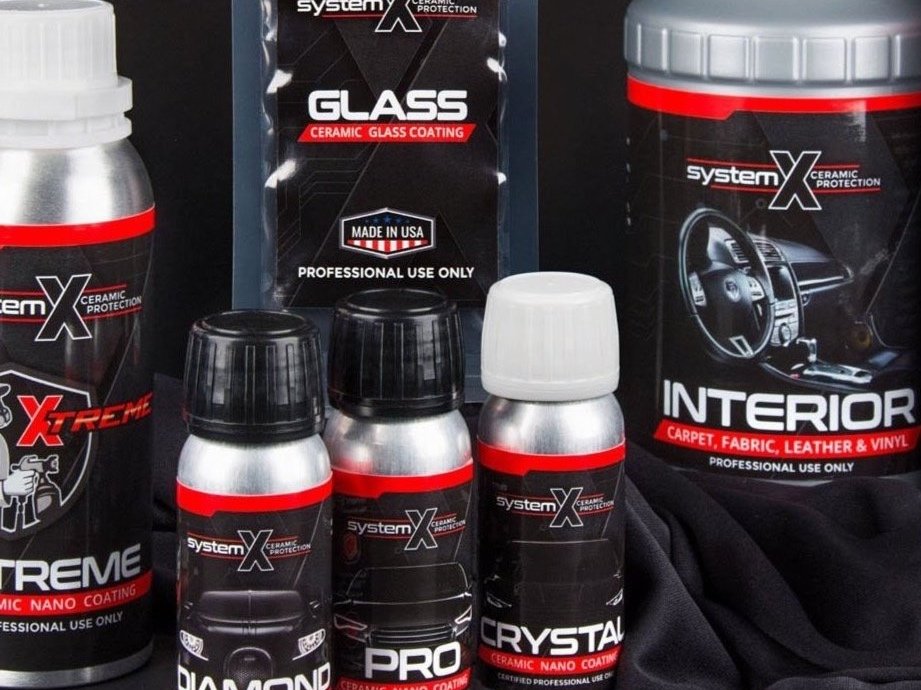Why Drivers Count On Ceramic Coating Philadelphia for Superior Car Treatment
Why Drivers Count On Ceramic Coating Philadelphia for Superior Car Treatment
Blog Article
Why Ceramic Finishing Is the Ultimate Service for a Perfect Finish
Ceramic covering has actually emerged as a leading service for those looking for a perfect surface for their cars, many thanks to its amazing longevity and safety features. What factors truly set ceramic layer apart?
What Is Ceramic Coating?

When applied properly, ceramic coating develops a hydrophobic surface that pushes back water and dust, making it much easier to clean and keep. Unlike conventional waxes or sealers, which usually provide short-lived protection, ceramic coatings can last for numerous years, depending on the product quality and application technique. The process of applying ceramic finishing needs meticulous preparation, consisting of thorough cleansing and occasionally repaint correction, to guarantee optimal bonding and efficiency.
Ceramic coatings are not restricted to automobile surfaces; they can additionally be utilized on various products, including glass, steel, and plastics, giving a functional service for improving protection. Overall, ceramic covering represents a considerable improvement in surface area protection modern technology, combining both practical and visual benefits for a vast array of applications.
Advantages of Ceramic Coating
While lots of surface area security choices exist, the benefits of ceramic layer stick out due to its one-of-a-kind residential properties and durable efficiency. Among the main benefits is its phenomenal sturdiness. Ceramic Coating Philadelphia. Unlike typical wax or sealers that require regular reapplication, ceramic finishes offer a resilient layer that can last for numerous years, significantly reducing upkeep initiatives
Another significant advantage is improved protection against ecological pollutants. Ceramic layers create a hydrophobic surface area that fends off water, dirt, and various contaminants, making it less complicated to clean up. This attribute not just protects the lorry's look however likewise lessens the danger of rust and oxidation, specifically in harsh weather condition conditions.
Moreover, ceramic finishes supply premium resistance to UV rays, avoiding fading and degradation of paint gradually. This UV defense is crucial for preserving the visual value of surface areas and cars revealed to guide sunshine.
In addition, the glossy surface accomplished with ceramic layer improves the general visual allure, giving surface areas a showroom-quality sparkle. On the whole, ceramic finishings represent a substantial improvement in surface area defense modern technology, providing long-lasting advantages that cater to both useful and aesthetic needs.
Just How It Works
Comprehending the science behind ceramic finishes exposes exactly how they provide such impressive defense and long life. At its core, a ceramic covering is a fluid polymer that chemically bonds with the vehicle's manufacturing facility paint.
The application procedure involves numerous steps, consisting of surface area prep work, which is important to attaining optimum bond. When used, the covering undergoes a treating process, throughout which it solidifies and develops a semi-permanent bond with the paint surface area. This bond is what differentiates ceramic finishes from typical waxes and sealers, supplying a longer-lasting safety obstacle that can endure for many years.
Moreover, the density of the finish can improve its safety high qualities, making sure that it can stand up to harsh problems. Eventually, the scientific research of ceramic layers incorporates innovative materials with innovative application strategies to deliver an unparalleled degree of protection and visual enhancement for lorries.
Comparison With Standard Methods
When compared to conventional paint protection approaches such as waxes and sealers,The advantages of ceramic finishings come to be specifically apparent. While waxes supply a momentary luster, commonly lasting a couple check out here of weeks to a number of months, ceramic finishes supply a long-lasting protective layer that can endure for numerous years. This sturdiness considerably reduces the regularity of reapplication, making ceramic finishings a more cost-effective service with time.
Additionally, traditional techniques usually call for substantial prep work and numerous applications to attain an acceptable degree of protection. In comparison, ceramic finishings bond at a molecular degree with the automobile's surface area, creating a durable shield versus environmental pollutants like UV rays, acid rainfall, and road salts. This bond enhances the automobile's resistance to scratches and swirl marks, which are widespread with conventional waxes and sealers.
Moreover, the hydrophobic homes of ceramic finishes repel water and dirt, leading to simpler cleansing and upkeep. On the other hand, wax and sealant-treated surface areas can draw in gunk, requiring even more constant cleaning - Ceramic Coating Philadelphia. Overall, ceramic finishes not just give superior defense but also deliver an extra enduring and aesthetically attractive finish, developing them as the favored option for discerning vehicle owners
Application and Upkeep Tips

Making use of a foam applicator, apply the finish in little areas, adhering to the supplier's guidelines regarding density and overlap. Permit adequate curing time between coats, usually 24 hr, to ensure correct bonding. After application, it is critical to avoid direct exposure to water or rough elements for a minimum of a week to allow the finishing to totally cure.
In addition, utilizing a ceramic maintenance spray can boost the coating's hydrophobic properties and long life. Normal inspections for any type of indications of wear will certainly aid preserve the coating's honesty and maintain that pristine finish.
Conclusion
To conclude, ceramic coating becomes a superior alternative for achieving a remarkable vehicle coating. Its remarkable longevity, safety high qualities, and hydrophobic residential or commercial properties substantially enhance the vehicle's appearance while streamlining maintenance initiatives. By creating a robust bond with factory paint, ceramic covering effectively shields versus scratches, UV rays, and environmental pollutants. With a lifespan expanding numerous years, this sophisticated click for info solution not only preserves however additionally elevates the total visual allure of cars, making it a cost-effective investment for cars and truck lovers.

Report this page